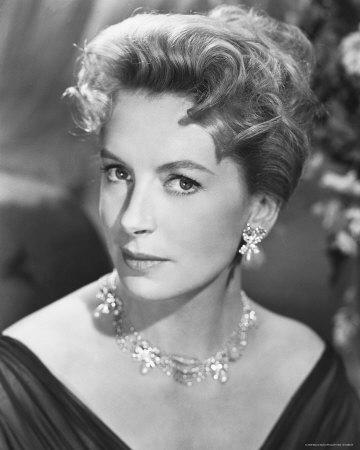Forging A New Nation: Post-Independence Virginia
Flag of the Virginian Federation
Virginia, along with Oceania and New England, was among the countries which arose from the Troubles but while New England was amongst the most-sparsely populated countries in the world due to Mejico grabbing the most populated part of said country as it gained its independence and Oceania fell into Unitarianism in an Indian-backed revolution, Virginia gained its freedom and independence in a relatively quick revolution lasting just two months under the leadership of the All-Virginian Congress, a provisional legislature/government convened by Virginian elites, who were already separatist-minded and not happy over how far-off London tried to dictate their affairs often and treated them as a colony to be subjected to “direct rule from London”. The All-Virginian Congress was a broad coalition ranging from hardline Protectionists to outright Revolutionary Unitarians united only by their desire to forge an independent Virginia free from the Kingdom of Brittania and so the task of uniting the nascent Virginian Federation was a hard task with it’s first Democrat, Vincent Benson, having his work cut out for him.

Vincent Benson, the first Democrat of the Virginian Federation
One of the first tasks of the All-Virginian Congress after proclaiming the independence of the Virginian Federation and winning said independence was to decide the constitutional structure of the Virginian Federation with the All-Virginian Congress convening in Conway as soon as the final loyalists were defeated to iron out the details of the government of the Virginian Federation. After a few months of arguments, the constitution of the Virginian Federation provided for a federal republic with a strong Democrat and a bicameral legislature with a National Assembly elected via mixed-member proportional representation directly by the population and a Federal Council comprised of representatives elected by provincial legislatures. Said constitution was approved by a unanimous vote of the All-Virginian Congress on August 3, 1950 and was ratified in a referendum on October 26, 1950 with 85.2% of the people of Virginia voting “Yes” for such a constitution.
In addition to drafting a new constitution, the All-Virginian Congress and the Provisional Government of the Virginian Federation also had to deal with the economic impact of Virginian independence as well. In this, they were helped by how Virginia already had a large degree of economic independence from Britannia even before Virginian political independence. However, Virginia still needed to strengthen its native industry as while it had a developed agrarian economy and a net exporter of food, colonial economic policies had neglected industry in favor of agriculture, which the Benson government sought to correct through providing incentives for businessmen to develop local industry through tax breaks and subsidies, which proved effective in kick-staring Virginia’s native industry along with tariffs to protect local industry and companies from undue competition. These economic policies to promote local industry would be pivotal in Virginia’s future development with two particular companies, “Three Stars”, founded by Alexander Wayland, who’s talented 22-year old (at the time of said company’s formation in 1954) daughter Michelle would be pivotal in Virginia’s future, which specialized in producing cheap electronics, and Rose Corp, which specialized in selling cheap automobiles to the peoples of Virginia.

Michelle Wayland, heiress to the Three Stars Corporation
After the ratification of the constitution, elections were slated for September 1952 and new political parties arose as the ideological splits in the big-tent All-Virginian Congress led to various political parties arising with the most prominent, measured in prominence in said provisional government and size, being the Virginian Republican Party, the Democratic Unitarians in the Virginian People’s Alliance, the Protectionist Virginian National Party, and the Unitarian Party of Virginia, representing the more radical Unitarians. The elections slated for September 1952 resulted in the victory of Benson and his Virginian Republican Party with the VRP winning 224 of the 480 seats at hand in the National Assembly to the VPA’’s 135, the VNP’s 74, and the VUP’s 47, andand Benson winning Democratic elections with 41.6% of the vote in the first round and handily defeating the Virginian People’s Alliance’s candidate, Franklin Whitley, a prominent trade union leader and militia leader who gained popularity in leading a formation of the nascent Virginian Army in it’s war of independence in the second round with Benson winning 65.2% of the vote.

Franklin Whitley, candidate of the Virginian People’s Alliance in 1952 and head of said party
Benson’s first full term as Democrat saw a continuation of the economic policies of his interim government but Benson’s government had to focus more on the foreign aspects of his administration as his government had to deal with border disputes between Virginia and Mamaruntu’s Inca Empire, which culminated in a series of border skirmishes and an undeclared border war between Virginia and Tawantinsuyu over Patagonia in 1954, which proved to be inconclusive and led to a return to pre-war borders. However Benson’s government was forced to increase military spending in response and strengthen Virginia’s native arms industry as attempts to purchase weapons from foreign powers proved futile due to the tensions between China and India which would culminate in the Great Asian War. Seeking re-election in 1956, Benson would narrowly defeat Whitley in a re-run of their 1952 battle in the second round, though with a narrower margin with Benson winning just 56.2% of the vote. Another prominent event in the 1956 election is the election was the election of the 31-year old Nicole Maynard to the National Assembly on the Virginian People’s Alliance’s “party-list” with her being already a vocal activist and “rising star” in the VPA along with the election of Margaret Tyrell, daughter of the CEO of the Rose Corporation on a constituency for the Virginian Republican Party.


Nicole Maynard (l) and Margaret Tyrell (r), two rising stars in Virginian politics






